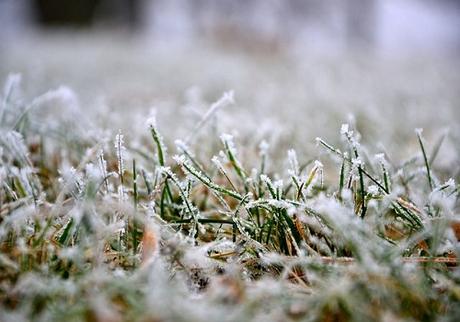Having a great looking lawn can make all the difference to the overall look of your house. Think about it; there is always that one house in the street with the immaculate lawn – the house with the lawn that always looks lush and green with a lovely even cut and straight edges. Well you can also have the perfect lawn, and it isn’t all that hard to achieve, you just need to follow a few basic lawn care tips and tricks.
Lawn Care Tips for Spring
Just because your lawn is still a dormant brown or covered in snow, doesn’t mean it’s too early to start thinking about spring lawn preparations. Early planning for spring is especially important if you live in an area that experiences long hot summers, as proper planning is key to maintaining a healthy, luscious lawn through even drought-like conditions.

Check Mower Blades Length
It can be tempting to set your mower blades to their lowest settings, whether for the cleaner look, or simply to allow more time between mowing. Unfortunately, leaving your blades at their lowest setting robs grass of much-needed protection. The higher your grass is allowed to grow, the deeper the roots will reach into the soil. Not only will your roots grow stronger, but each blade increases water reserves during drought conditions. Aim to cut your lawn no shorter than 3 inches.
Fertilizer Routine
While the majority of your fertilizing should be done in the fall when your grass is more focused on growing its root system, properly timing your spring fertilizer application can give our lawn the boost it needs to face hotter weather. Spring fertilizer application can help the lawn grow greener and thicker, but too much fertilizer can actually reduce the strength of its root system. Do not fertilize your grass in the summer, even if it starts to brown from the heat.
Water Less
It seems counter-intuitive to water your grass less in order to better survive the hot summer, but the way you water in the spring helps train your grass for the summer. Your spring watering schedule should involve watering your lawn deeply and infrequently. Changing your schedule in this way will drive water deeper into the soil, encouraging the lawn to send roots deeper to chase where the water goes. Short, frequent watering only saturates to top inch of soil, resulting in shallower root growth.
Importance of Aerating
As your grass grows, it develops a layer between the air and the soil known as thatch. If the thatch is not periodically removed, water can be redirected away from the lawn and stopped from penetrating into the soil. Aerating your lawn helps water reach the soil, and also remedies compacted soil, allowing for deeper root growth.
With a little bit of planning, your lawn will be the envy of your neighborhood even during the hotter summer months. Lawn care can vary slightly based on the type of seed planted and where your lawn is located. Check with your local experts for more specific information for your individual landscape.
Lawn Care Tips for Summer
Summer is the perfect time to spend a nice day out of the house, be it to practice your gardening skills or to have your family gather for a barbeque. If there is one thing that can contribute a great deal to a more pleasurable summer experience, it is having a well maintained, green lawn. You have to make sure you keep your lawn fresh with the summer underway, as this is considered the most stressful time for it. There are some steps you can take in that direction in order to ensure that the grass in your lawn is healthy and looks great.

Watering
Watering your lawn is perhaps the most important thing you have to be careful about in the summer. Giving the grass its much-deserved drink of water can keep it fresh, but only if it’s done at the right time. Since summer temperatures reach high values around mid-day, it is best to water the lawn early in the morning or later in the evening. That way moisture will not evaporate, for the most part, and it will reach the roots. Avoid watering too often, as this can cause the roots to reach shallow depths and possibly die out. Limit watering to once or twice a week. Consider adding soluble feeds through a watering can.
Weeding
Gardening experts suggest you keep an eye out for weeds and moss and act quickly if you notice any such problems. What you can do in case this occurs, is add a lawn care product, which can quickly eradicate unwanted weeds. Be selective about the weedkiller, as you want to target only weeds without causing damage to the grass.
Mowing
It is important to mow the lawn at least once per week. The optimal height you should aim for is 1 inch. Any short, and you may experience weeds and moss growing in the grass. Collect all grass clippings and use them to make compost. It can be later used in various gardening tasks. If the weather is really hot, you may want to leave your grass to run taller, since it will be stressed. You will be doing your lawn a favor if you reduce mowing in such conditions.
Feeding
Grass and plants, in general, absorb more nutrients from the soil in hot weather. That is why you will do good to provide some help for your lawn in the form of additional feeding. You can introduce liquid lawn feed, which makes for quick results. Granular fertilizer is a good option when you want to cover larger areas. Acquire a lawn spreader to ensure the feed is applied evenly across the lawn for better results. If it is too hot, you might have to water such products in order to activate them.
Lawn care is an important chore, which you should most certainly never overlook. In return, you will have a green and fresh lawn looking great.
Lawn Care Tips for Fall
Mow Frequently and Don’t Cut Too Short
You may think that letting your grass grow long, then mowing it as short as possible is the way to do your lawns. It may seem like it at the time, but it is one of the best ways to damage your grass and cause it to have a distinctly uneven look. Your mower will cut more evenly if the grass has not grown too high.
A general rule that most professionals will tell you is to cut off no more than a third of the grass blade.

Use a Good Quality Mower with Sharp Blades
You may be tempted to get the cheapest mower you can and just run it into the ground without worrying about maintenance or blade upkeep. A cheap mower may work well to start with, but in our experience, it just leads to poor performance in a much shorter time than a good quality mower. A gas mower is preferred, but cordless mowers are also becoming quite popular among our aging population. Keeping the blades of your mower sharp is probably THE most important thing you can do to maintain the perfect lawn. Blunt blades will just push some of the grass blades over, resulting in a very uneven finish.
Feed Your Lawn
Fertilizing your lawn is vital to keeping it looking lush and thick. Choose a combination of fast and slow-release nitrogen-based fertilizer.
If you live in the north, feed your grass in spring and the fall, if you live in the south then feed in the spring and summer.
Water Less Frequently For Longer in the Morning
Watering your grass every day causes the plant to develop shallow roots, this means that if a dry spell does come around, then it cannot access the water deep in the ground. It also means that it is less resilient to foot traffic and other activities that can damage a lawn. Instead give your lawn a good soaking once a week, this way the grass will develop an excellent deep root system that can find the water when that drought comes around.
Watering in the morning means that the blades of your grass can dry out properly during the day. Grass that is left wet overnight becomes more susceptible to diseases.
Remove Weeds
Most weeds have an enormous visual impact on your lawns, so if you are after the perfect lawn, it makes sense to remove weeds as soon as you notice them. If there are only few weeds, then remove them by hand and be sure to get the root system if possible. If any weeds have sprung up at once, then you will want to apply a weed control product, these usually come in a granular form and are available at most garden centers.
Lawn Care Tips for Winter
If you don’t put in the work during the season of fall, your lawn is going to suffer during the winter months. You will potentially see some of the hard work you’ve put in all year being undone, and depending on the temperatures and rainfall it can take months to get your lawn back into top condition.

So, what can you do? You can start by preparing your lawn in fall by using good quality fertilizers, removing leaves and debris, aerating your lawn, overseeding, and removing weeds. It’s not as much work as it may sound, and it’s more than worth the time for the results.
Strengthen Your Lawn with Fertilizer
Whether you’re a keen gardener, or just casual. You will know the importance of feeding your lawn. The important thing to do before winter is to start using a fertilizer that’s higher in nitrogen. These reach deeper into the roots to strengthen the lawn and help it survive ground frosts.
Always Remove Leaves and Debris
Fall treats us with a lovely arrangement of colors as the leaves on the trees change from green, to yellows, browns, and reds. It looks great, but you can’t leave the leaves on the ground or they will attract insects and cause damage to your lawn as they start to decompose. Either a rake of a leaf blower will help clear them up pretty quickly.
A Little Overseeding Doesn’t Hurt
Overseeding is a process where you throw down some new seeds to thicken or repair your lawn. Doing this in fall, even if you have a nice full lawn, helps to add some additional grass and means you will have more survive the winter months.
Declare War on Weeds
Weeds are a cause of endless frustration for all gardeners. Coming off the end of summer there will not doubt be some new weeds shooting up, it’s incredibly important you pull them at the roots during fall and poison them. Weeds will grow stronger during winter while your lawn suffers, so it can become a real problem if ignored.
Aerate Your Lawn
To aerate a lawn all you need to do is poke some holes into the soil. Focus on areas that have become patchy or feel compact. Soil settles and becomes dense over time as rainfall and foot traffic presses it down. Aerating your lawn allows more drainage, airflow, and nutrients to reach deeper into the soil. Strengthening the lawn, which is particularly important during winter.
In Summary
By following these few lawn care tips you will notice a huge improvement in the condition of your lawn all throughout the year. If you experience snow and frosts where you live you can’t do much lawn maintenance during winter, so putting in the groundwork in fall will pay off in a big way.
